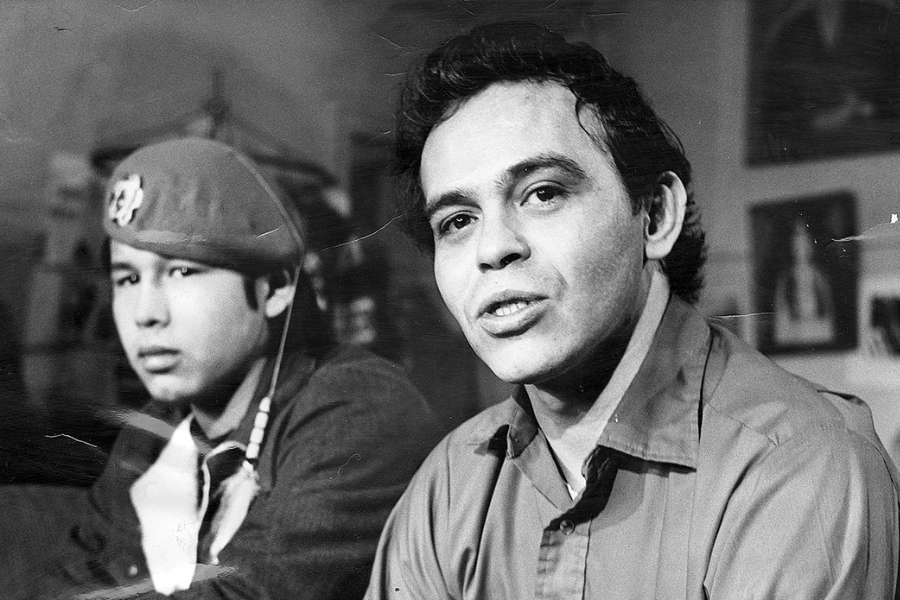Hank Adams: Championing Native American Sovereignty and Social Justice
The Life and Impact of Hank Adams
Hank Adams is a remarkable figure in the history of Indigenous activism and rights in the United States. Often overlooked in mainstream narratives, his legacy is crucial to understanding the progress in Native American sovereignty, treaty rights, and social justice. A citizen of the Assiniboine-Sioux tribe, Adams dedicated his life to advocating for Indigenous peoples, challenging injustices, and influencing significant legal reforms. Through his tireless efforts, he has left a lasting impact on both the Native American community and the broader civil rights movement.
Adams was not only an activist but also a strategist and writer who played an essential role in drawing national attention to the challenges faced by Indigenous communities. His work spans from pivotal legal victories to grassroots activism, solidifying him as one of the most influential figures in the struggle for Native American rights. This article delves into the life of Hank Adams, focusing on his journey, key achievements, and lasting influence in the fight for Indigenous justice.
Early Life and Cultural Influences
Born in 1943 on the Fort Peck Indian Reservation in Montana, Hank Adams grew up within the Assiniboine and Sioux communities, experiencing firsthand the struggles of Indigenous peoples living in poverty and marginalization. His early life was shaped by the stories of treaty violations and the suppression of Native culture told by his family and elders. These experiences instilled in him a strong sense of justice and the desire to advocate for his people’s rights and dignity.
Education was a crucial factor in Adams’ development as an activist. He attended local schools before pursuing higher education at the University of Washington. There, he immersed himself in Native American history, law, and the deeply entrenched injustices that Indigenous communities faced in the United States. The systemic issues of broken treaties and the erosion of tribal sovereignty were central to Adams’ education and ultimately guided his activism.
During this period, Adams began to realize the power of education and organization in effecting change. His involvement in community efforts to preserve Indigenous culture and rights was influenced by mentors and tribal elders who guided his vision. These formative experiences laid the foundation for Adams’ lifelong commitment to defending the rights and sovereignty of Native peoples.
Activism and Strategic Leadership
The 1960s was a time of significant social upheaval in the United States, marked by the Civil Rights Movement and growing activism across various marginalized communities. Hank Adams was a key player in the Indigenous rights movement during this transformative period. One of his most notable contributions was his role in the Fish Wars of the Pacific Northwest. This struggle aimed to preserve the fishing rights of Native American tribes, which had been systematically violated by state authorities. The Fish Wars were a critical part of Adams’ early activism, showcasing his ability to mobilize communities, organize protests, and challenge legal systems.
Adams became a key strategist in these efforts, organizing protests, sit-ins, and legal challenges to assert treaty-guaranteed rights. His work led to high-profile demonstrations, such as the “fish-ins,” where Native fishers intentionally defied state-imposed fishing laws to highlight the violation of their rights. These acts of civil disobedience caught national attention and became a symbol of the broader struggle for Indigenous sovereignty and justice.
In addition to his leadership in the Fish Wars, Adams worked closely with other influential Native leaders and groups, including the American Indian Movement (AIM). His strategic approach to activism, which combined grassroots organizing, legal action, and media campaigns, made him a crucial figure in advancing Indigenous causes during this era. His ability to unite diverse stakeholders and effectively communicate the urgency of the struggle made him an influential and respected leader within the movement.
Landmark Achievements in Indigenous Rights
One of Hank Adams’ most significant achievements came in 1974 with the Boldt Decision, a landmark ruling in the case of United States v. Washington. This decision affirmed the treaty rights of Native American tribes to fish in their traditional waters, allocating 50% of the annual catch to the treaty tribes. The Boldt Decision was a direct result of years of activism, public advocacy, and legal strategies, much of which Adams had spearheaded.
In addition to his role as an advocate, Adams contributed essential research, testimony, and strategic guidance that helped shape the case. The Boldt Decision not only restored fishing rights but also set a powerful legal precedent for recognizing and honoring Native American treaties. This ruling represented a monumental victory for Native American sovereignty and the fight to protect Indigenous rights under the U.S. legal system.
While the Boldt Decision stands as one of Adams’ most well-known victories, his activism extended to numerous other causes affecting Native American communities. He was an ardent advocate for better healthcare, education, and housing, recognizing that systemic inequities required a multifaceted approach. His work also focused on protecting sacred lands and fighting for land rights, ensuring that Indigenous voices were heard in policy-making processes.
Throughout his career, Adams received numerous honors for his contributions, including the American Indian Distinguished Service Award. Despite this recognition, he remained humble, always redirecting attention to the collective achievements of the Indigenous rights movement rather than seeking personal accolades.
Challenges and Enduring Legacy
Hank Adams’ journey was not without challenges. Throughout his career, he faced resistance from state authorities, corporate interests, and even within the activist community itself. The road to change was often difficult, and Adams put his safety and well-being at risk to fight for the rights of his people. His work required immense personal sacrifice, but his unwavering commitment to justice allowed him to persevere.
Despite these obstacles, Adams’ strategic thinking, collaborative leadership, and dedication ensured that his efforts would leave a lasting legacy. His ability to build bridges between different tribes, activists, and allies made him an invaluable asset to the movement. Adams was not only a fighter but a unifier, drawing people together to work toward common goals and a shared vision for Indigenous rights.
Today, Hank Adams’ legacy continues to inspire a new generation of Indigenous activists. His work remains a touchstone for those advocating for sovereignty, cultural preservation, environmental justice, and the rights of Native peoples. Adams’ story is a testament to the enduring power of persistence and the ability of one individual to effect profound change in the face of adversity.
Hank Adams’ impact on Native American activism cannot be overstated. His life’s work embodies the spirit of resistance, resilience, and unity that has shaped Indigenous activism for generations. Through his tireless advocacy and strategic leadership, Adams has helped to pave the way for future generations to continue the fight for justice, equality, and sovereignty for Native American communities.
FAQs:
- Who is Hank Adams?
Hank Adams is a prominent Native American activist and strategist known for his work advocating for Indigenous rights, particularly in the areas of treaty rights, land rights, and social justice. - What was Hank Adams’ role in the Fish Wars?
Hank Adams played a critical role in organizing protests and legal actions during the Fish Wars of the Pacific Northwest, which aimed to protect Native American fishing rights guaranteed by treaties. - What is the Boldt Decision?
The Boldt Decision, made in 1974, was a landmark legal ruling that affirmed Native American tribes’ treaty rights to fish in their traditional waters, a victory largely attributed to Hank Adams’ advocacy. - What are some of Hank Adams’ key achievements?
Some of Adams’ key achievements include his involvement in the Fish Wars, his advocacy for the Boldt Decision, and his efforts to improve healthcare, education, and housing for Native Americans. - What is Hank Adams’ legacy?
Hank Adams’ legacy includes his impact on Indigenous activism, his role in advancing Native American sovereignty, and his strategic leadership in the broader civil rights movement, inspiring future generations of activists.
Facts:
- Hank Adams was born in 1943 on the Fort Peck Indian Reservation in Montana.
- He was a key strategist in the Fish Wars of the Pacific Northwest, which fought for Native American fishing rights.
- Adams played an essential role in the 1974 Boldt Decision, which restored treaty fishing rights to Native tribes.
- He received the American Indian Distinguished Service Award for his contributions to Indigenous rights.
- Hank Adams focused on a wide range of issues, including healthcare, education, housing, and the protection of sacred lands.
Summary:
Hank Adams, a dedicated Native American activist and strategist, has played a pivotal role in advancing Indigenous rights throughout his life. Born in 1943 on the Fort Peck Indian Reservation, Adams became a key figure in the fight for treaty rights, most notably through his involvement in the Fish Wars and his critical contribution to the Boldt Decision of 1974. A tireless advocate for better living conditions, healthcare, and the protection of Native lands, Adams’ work has left an enduring legacy that continues to inspire Indigenous activists today.
Explore the world of NFTs and unique digital assets at hdhub4u.me.uk.






